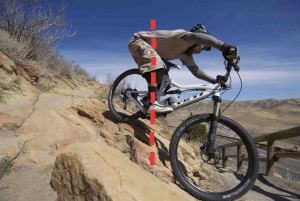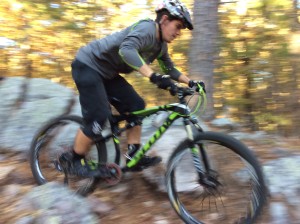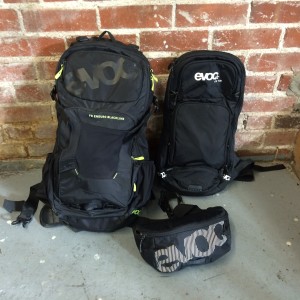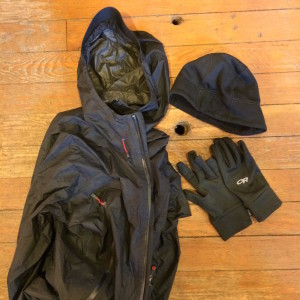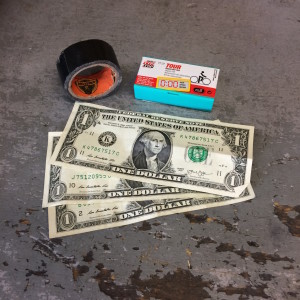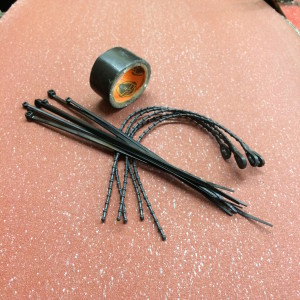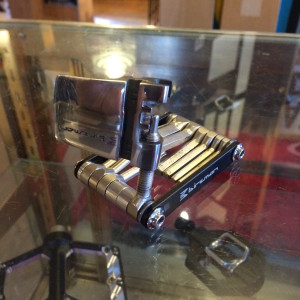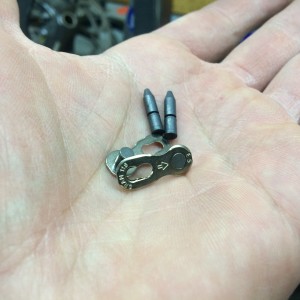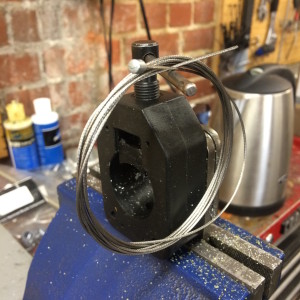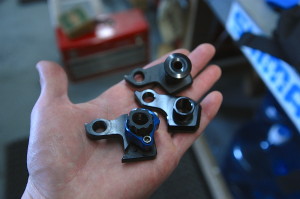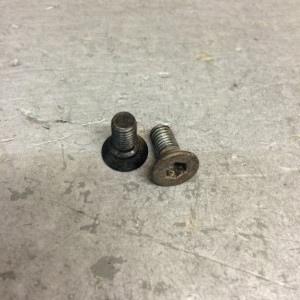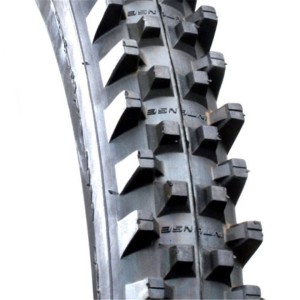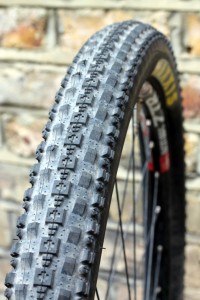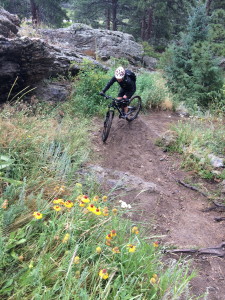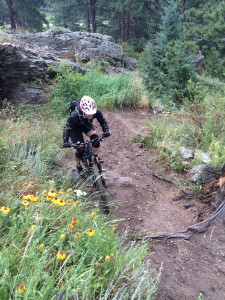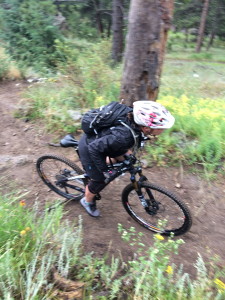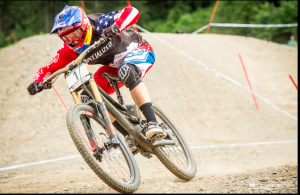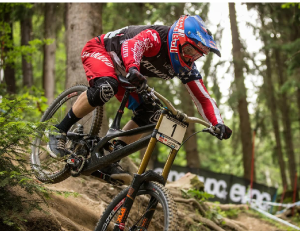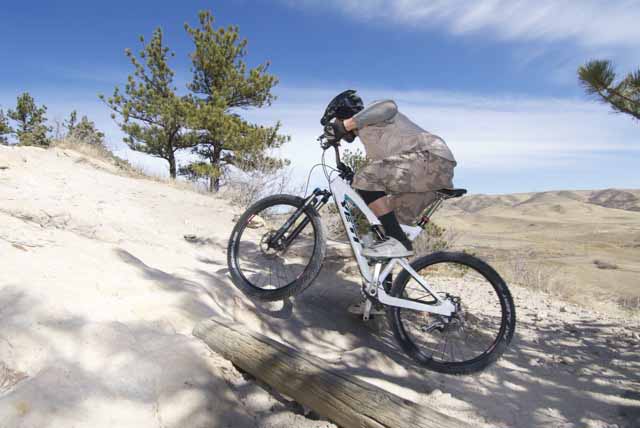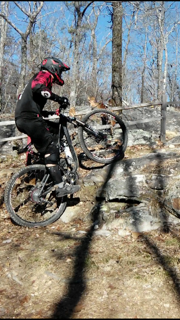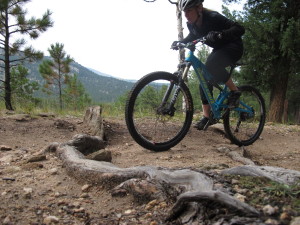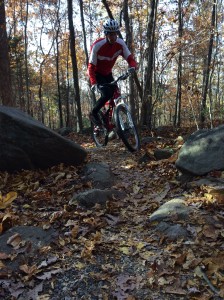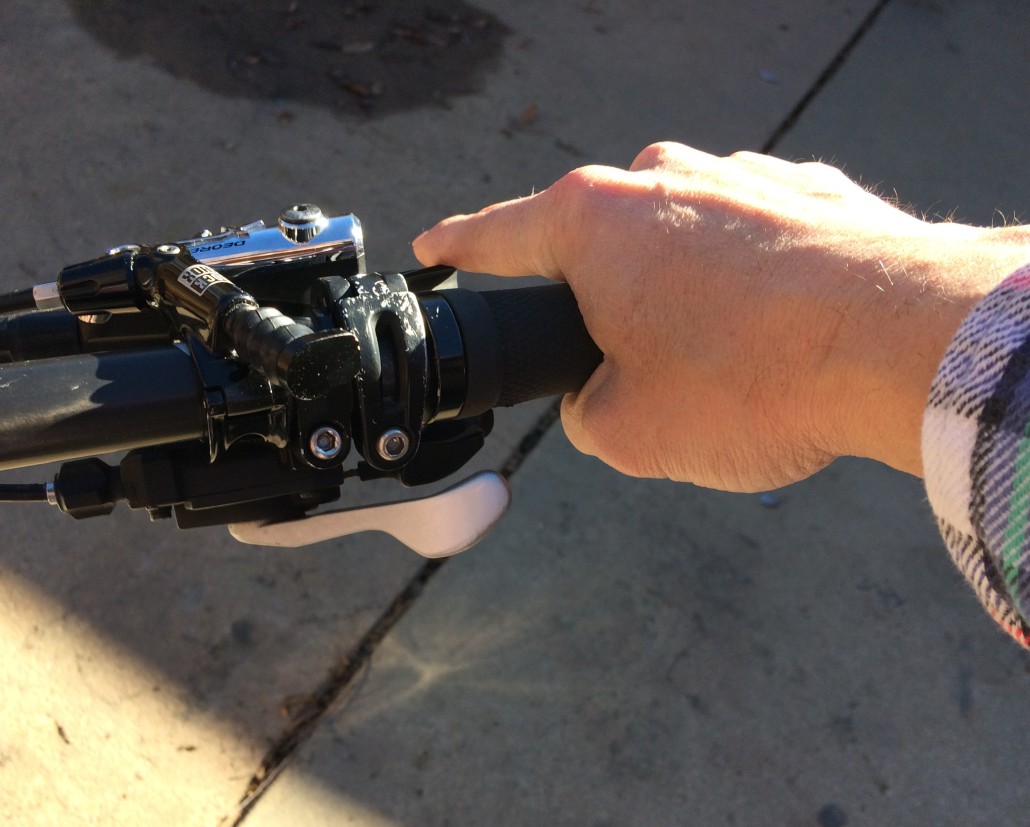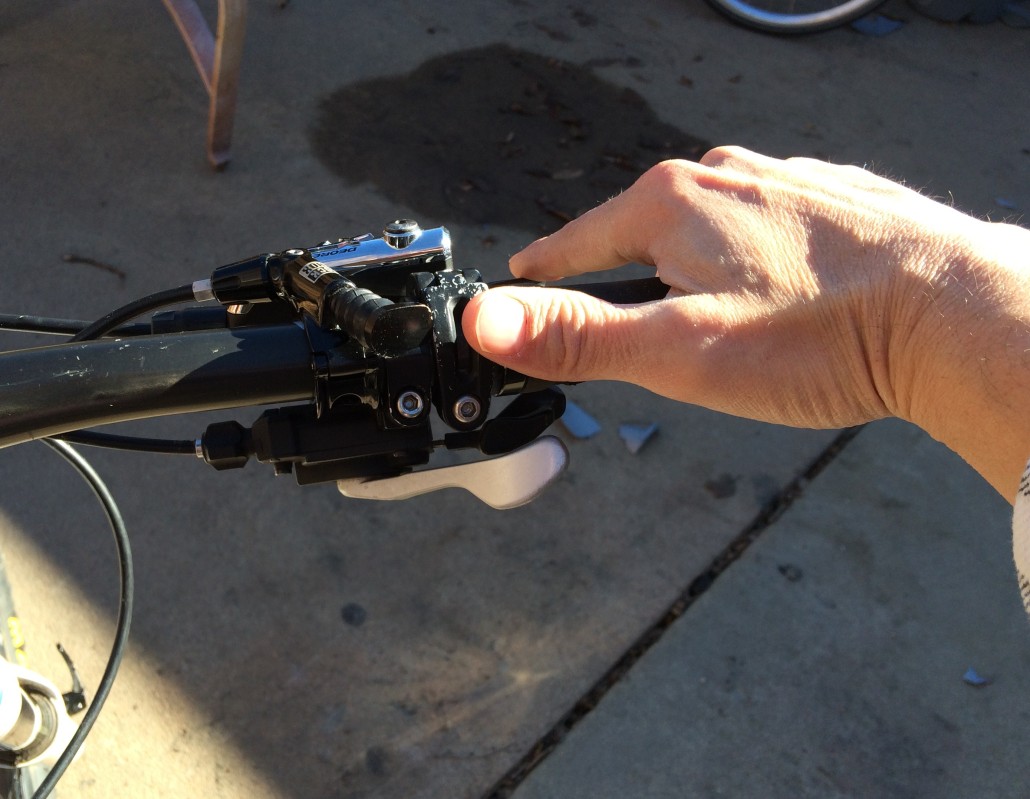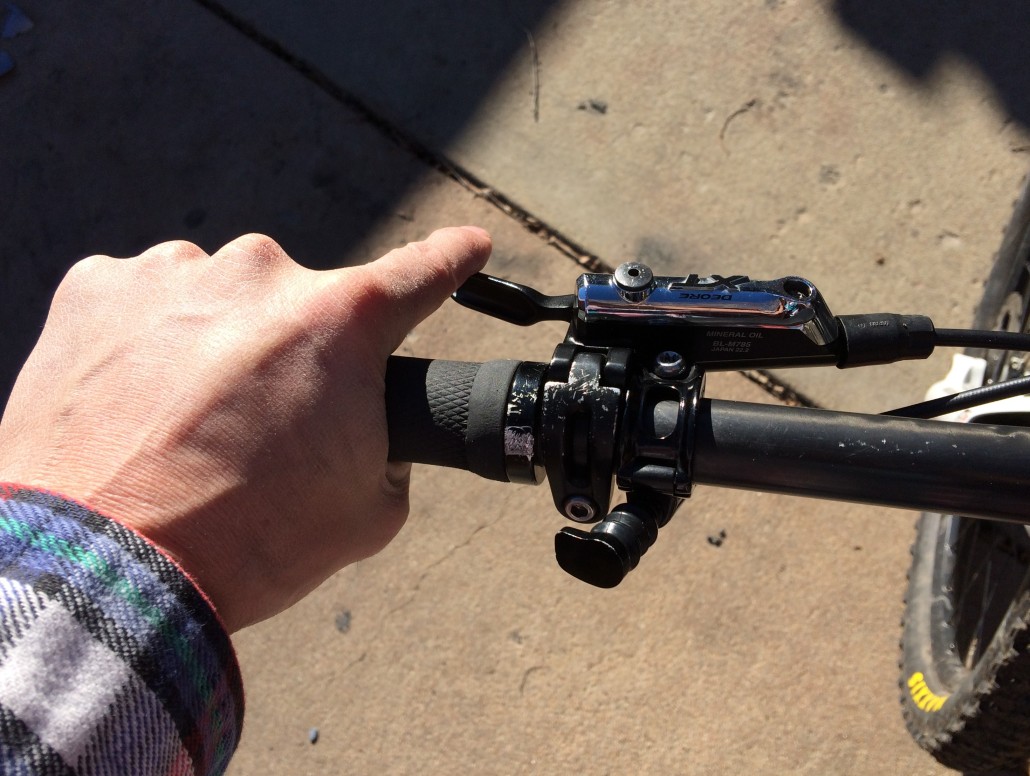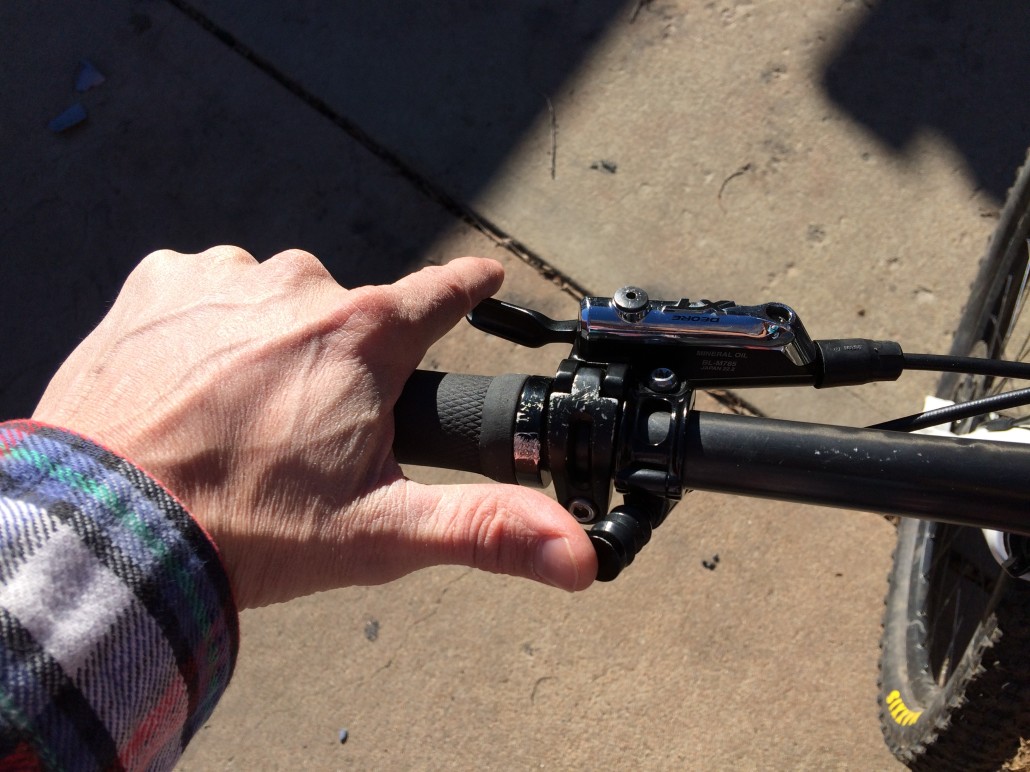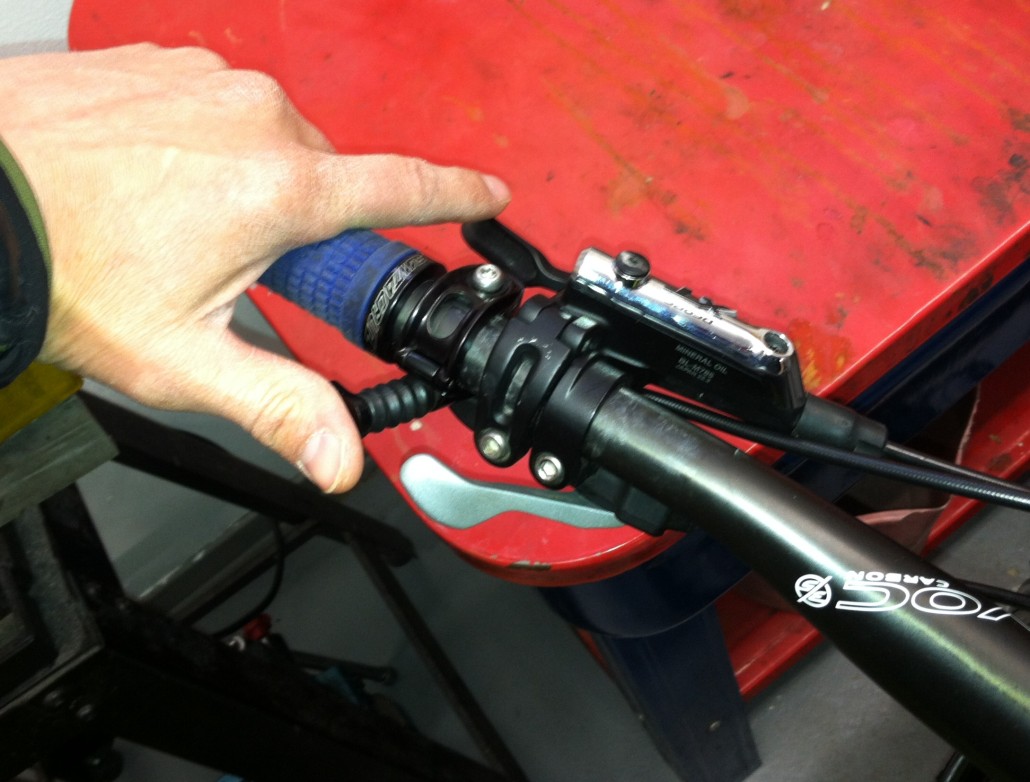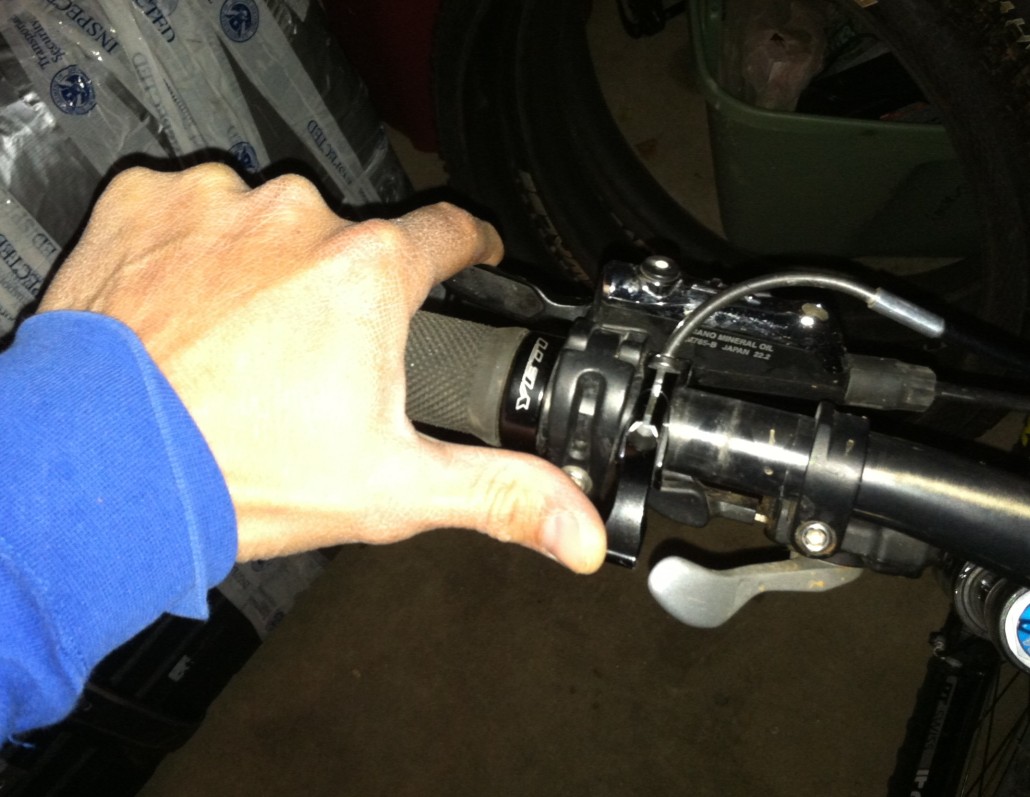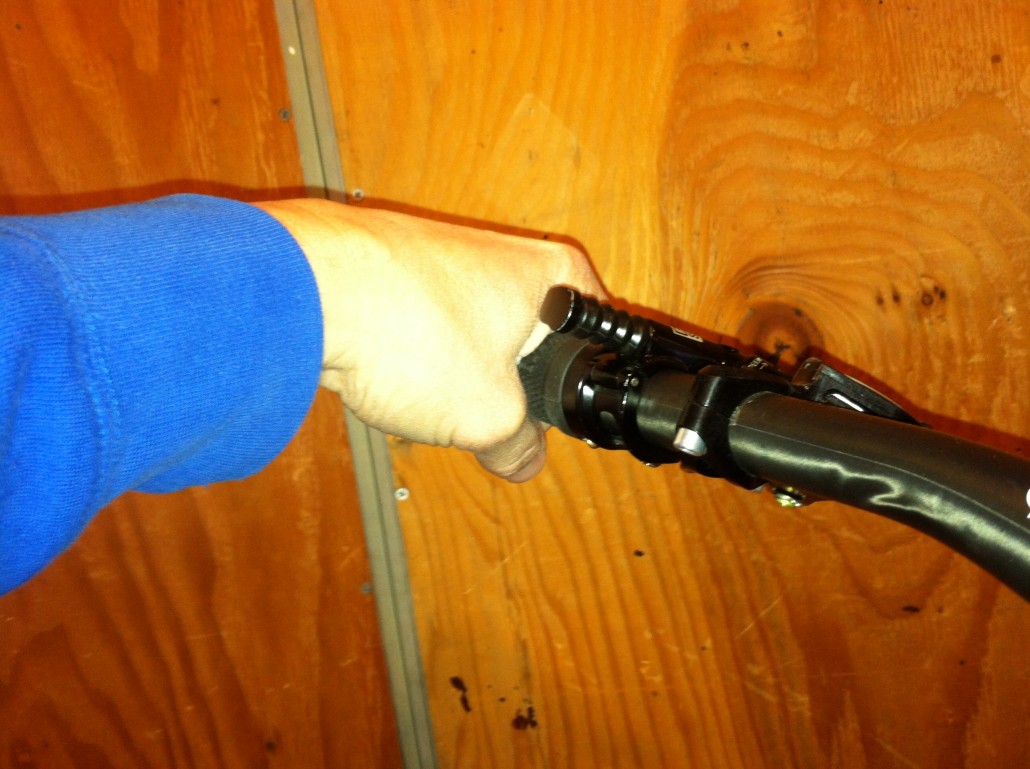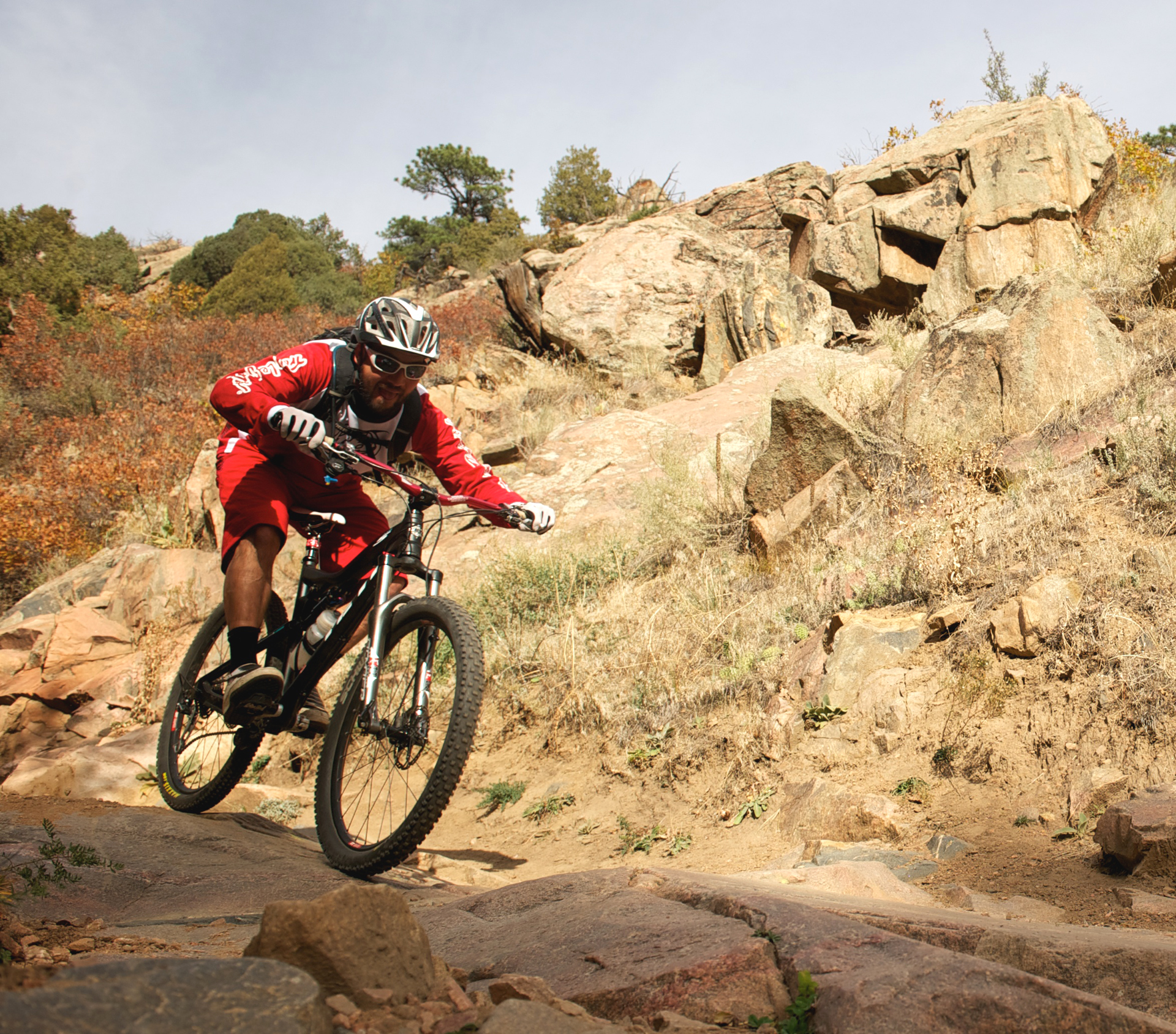MTB Pedals—Clips or Flats? Ride Both!
Still not sure which pedal system is best for you? Confused on why a pedal that you clip into with your cleat/shoe is actually called a “clippless-pedal”?
Here’s some history on where these systems came from, more on the advantages and disadvantages of each system… If you’ve had my instruction previously, you’ve already heard a bunch of this, but there’s definitely some new info here (even for advanced riders)…And, this may be a cool article to share with a buddy who is still up in the air on pedal choices.
First, there is no such thing as a better or worse pedal system…
Of course, both systems have advantages and disadvantages; and, while many of these are quite obvious, there are still many misconceptions about each. If you want to be the best all around MTB rider possible, you’ll have at least working knowledge of both systems. And, it’s my belief, that for many reasons, all beginner riders should ride flat pedals for at least a while, at least to the point where they get comfortable with this pedal system.
So, first, a little history on MTB pedal systems…In the ancient days of mountain biking (you know, like fifteen-twenty years ago), most mountain bikers believed that—when it came to pedals—you had to be “clipped in” to be a real mountain biker. “Clipped-in” means the rider’s shoes had metal cleats attached to the soles, and these cleats actually clipped into the pedals, securing the shoe to the pedal. This system came from road riding. Mountain bikes, in the early days, were primarily derived form road cycling.
It wasn’t until the influence of downhill riding and racing—which was more akin to motocross and BMX than road cycling—that modern mountain biking started to come into it’s own in terms of equipment: full suspension, disc brakes, real tires…and, yes, flat pedals systems (also referred to as Platform pedals or BMX pedals). With these pedals, there are no cleats to clip into the pedals…just the rider’s shoes placed on the pedal—BMX style. This equipment “revolution” started happening around the mid to late nineties. Previous to this, mountain bikes were essentially road bikes with slightly fatter tires and straight handlebars…a far cry from today’s MTB machines.
Road riders such as Lance Armstrong and Eddy Merckx, among others, popularized the high cadence spin (high RPM’s with the pedals) as the most efficient way to pedal a bicycle on the road. It’s more difficult to spin these high cadences without your feet being attached to the pedals in some manner, hence the retention systems.
Because MTB was derived from road cycling, this high cadence pedaling technique made it’s way over into MTB pretty quickly…and never went away….which is good. Because it is necessary…sometimes. However, many MTB riders don’t take into consideration that riding MTB’s in tough terrain and riding road bikes on paved roads is like apples and oranges. I’ll buy that the most efficient way to pedal a bike on a smooth surface is with your butt on the seat and your feet spinning high cadence circles with the pedals. This is true on the road and on smooth trail with a mountain bike. But this doesn’t cut it in real MTB riding in technically difficult terrain. Proper technique in difficult terrain, when the bike will need to pivot and move around beneath us, requires us to get off the seat—definitely while descending and at least intermittently while climbing difficult terrain. We also need to slow our pedal cadence so that we can accelerate the bike when needed, wheel over obstacles. balance better, clock—or time—our pedals to miss obstacles, unweight the rear of the bike, etc…none of this is necessary for road riding or riding MTB on smooth trail surfaces.
Because of this (and more), many of the perceived advantages of clipping in are negated when the trail gets a little tricky. Really, when it comes to the act of pure pedaling, the only advantage of clipping in is the ability to spin those higher cadences with less effort. All of the skills exclusive to mountain biking listed above (and more), in fact require quite low pedal cadences to be effective. Thus, clipping in isn’t really an advantage in a lot of situations and can often be a hindrance.
*** Here’s a quick explanation of the terms “clip-less” pedals vs Flats, Platforms, and BMX-style pedals:
OK, so the term “clip-less pedals” doesn’t really make sense. After all, this is the system where a cleat, that is attached to the bottom of your shoe, actually does CLIP INTO your pedal (so why’s it called clip-less, right?!?). The pedal retains this cleat so that your shoe is “attached” to the pedal (you un-attach the shoe from the pedal with a twisting motion of your foot and this allows the pedal to release the cleat). If you’re clipped in, your shoe won’t bounce off or slide around on the pedal. You have the ability to “spin circles” when pedaling as well as have power on the up-stroke of the pedaling cycle, which, depending on who you talk to and (more accurately) where and how you ride, may (or may not) be a big advantage. BMX or Flats or Platform pedals are simply pedals with platforms that you put your foot on. They don’t have a retention system. They do, however, have replaceable pins protruding from the platform that provide very ample traction with the correct shoe/pedal combinations.
Still confused on where the “clip-less” name came from? Of course you are… Here’s how it happened: in the good ol’ days, road bikes didn’t have fairly advanced spring-loaded retention systems on pedals; nor did they have precisely machined cleats that attached to the bottom of $350 carbon fiber shoes…as they do now. In the ol’ days, they had what were called Toe-clips. This was a simple system where simple straps tightened a clip, holding your shoe tightly to the pedal. Eventually, the toe-clips were ditched in favor of the more advance, modern cleat/pedal-retention systems. No more toe-clips meant modern pedals were now labeled as clip-less… and the name stuck.
But back to riding…
Why should beginner riders be on flat pedals, at least at some point, and for at least long enough to feel comfortable riding with them?
First, if you’re new to riding MTB, you’re going to notice that there are all kinds of crazy things out there on the trail to worry about besides fumbling around, trying to clip in and out of your pedals. Trees, rocks, roots, steep ups, steep downs, other riders, dogs, cats…you name it. And, that’s not even to mention the other challenges of riding the bike correctly: proper body position, weight placement (Video), reading the trail properly and picking a good line, proper braking technique, shifting, pedal cadence, perhaps wheeling over a log…You get my drift. All of these challenges and obstacles will be overwhelming at first. Why complicate things further by not being able to readily put a foot down in order to save yourself from hitting the deck?
That’s the number one advantage of flat pedals: you can almost always instantly get a foot (or two) to the ground when needed (no getting stuck in the pedal). And, easily get your foot back on the pedal when needed…
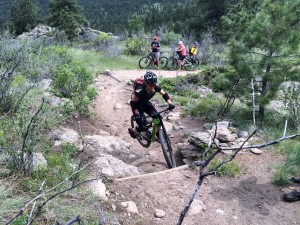
This rider has made a few mistakes on this climb and has come to a sudden halt. As you can see, she is twisting her right foot to get out of her pedal and get a foot to the ground safely. Often, with clip-less pedals, the twisting motion can take a bit too long–especially for beginner riders–and the rider ends up taking a tumble on the rock because they can’t release their for quickly enough.
Not surprisingly, beginner riders (no cycling background at all: no road, triathlon, etc.) don’t have much of an issue starting out with riding flat pedals. Flat pedals—and not being attached to the bike—feel way more natural than being clipped in. These riders are usually terrified at the thought of clipping in. Good for them. The all important basics of MTB will come to them a lot quicker and easier with flat pedals than if they started out with clip-less pedals and they’ll be way safer and more confident on the bike.
The group that suffers the most from the pedal choice/situation/dilema are riders that are new to mountain biking but that have cycling riding experience in the areas of road, triathlon, even true XC (“cross country”) mountain bike racing (which is seldom involves riding technically difficult terrain). Unlike the first group, who is scared to clip in and attached to the bike—and rightfully so—this group, because of their previous experience in other riding disciplines (where you do clip in and reap the benefits because most of it can easily be done seated and with high pedal cadences), is comfortable being clipped in… and they freak out when they are not attached to the bike. One of the biggest reasons why MTB riders won’t ride flat pedals is because when the bike starts bouncing around, their feet bounce off of the pedals. This is obviously not good. So, they clip in. No more bouncing off the pedals! Problem solved, right? The bummer with this is that the rider wasn’t bouncing off of the pedals because of the lack of a retention system, he was bouncing off of the pedals because of improper technique which will lead to all kinds of other problems down the road. He may getting away with improper technique for the moment, but he essentially put a band-aid on the real problem and is now developing bad technique and bad habits that will eventually catch up with him.
And that’s another advantage of flat pedals. Flats force the rider to do things correctly on the bike: proper body position and weight placement will provide pedal pressure and range of motion in the legs. This will allow the riders feet to “follow” the pedals as the bike moves around under the rider and the rider will not bounce off of the pedals in the rough. Thus, the rider has to maintain this proper riding technique, creating proper riding habits in the process. This proper position and weight placement is the foundation of proper MTB riding. Flat pedals make you do these things correctly.
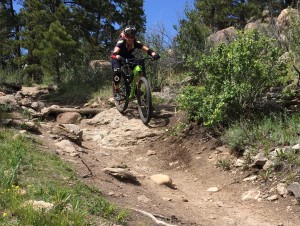
While clip-less pedals will definitely aid in keeping a rider’s feet on the pedals in difficult terrain, proper body position and weight placement–as seen here–are crucial and are the main factor in keeping a rider glued to the pedals.
How about pulling up on your cleats to “bunny-hop” or unweight the rear wheel? This is Terrible Technique 101. This may work for a bit, and this may be the way your buddies tell you to get the bike off the ground, but—mark my words—you WILL pop out of your cleats at the wrong time and it’s going to hurt really bad…. Lifting the bike properly is about leverage and doing a few simple things correctly. Many pro downhillers ride with flat pedals as well as all BMX’ers. Your cleats are not for bike handling.
Another problem with group that starts MTB riding clipped in? Very often, they never develop the ability to ride the bike at extremely slow speeds. Any rider that has ridden clipped in for any length of time has had the dreaded (and possibly embarrassing) experience of slowing or stopping (or maybe stalling out on a climb) and needing to immediately put a foot down; however, for whatever reason, the rider can’t quite get her foot out of the pedal, and, BAM! She’s toppled over and hit the ground. Usually these falls are simply that: toppling over at slow speeds, not even crashes, really. But, in the wrong situations, this can be extremely dangerous (over a cliff? Into traffic?). And, even just toppling over— especially if its on jagged rocks—is going to hurt. Once a rider has had this experience with clip-less pedals, it’s in the back of their head every time they slow down to extremely slow speeds…so they don’t ride at extremely slow speeds, and if they do, they always take their foot out nice and early.
Unfortunately, being able to ride at extremely slow speeds, with both feet on the pedals, and under control is a must in technical MTB riding [check out this video at the 2:05 mark. Notice how riding slowly is extremely necessary in order to ride these steep trails sections]. Again, on super easy, flat trail, or the road, you can take a foot out early—you don’t need much control at these slow speeds. But this won’t work—and is quite dangerous— in the nasty stuff.
In my instruction clinics, we cover switchbacks extensively. A true switchback is a 180 degree, very tight turn, on a very steep section of trail. These are some of the more difficult features out there. I don’t care who you are or how good you are as a rider, with very few exceptions, switchbacks will need to be taken at very slow speeds. You simply can’t change direction to that degree, with that tight of an arc, unless you are moving very slowly. And, quite often, because of the steepness of the terrain and erosion, there will be rock ledges, tree roots, water-bars, etc. present on the trail’s surface…and the switchback will be on the side of a cliff! The fact of the matter is, if you can’t ride extremely slowly, with confidence, under these conditions…you can’t—or shouldn’t—ride this trail. I consistently get riders that are itching to know what the magic formula is to being successful on switchbacks. Bad news: there isn’t one. Switchbacks require a rider to (often) do many basic things correctly—without the benefit of momentum: nine times out of ten, the rider’s inability to ride slowly and under control is the main problem.
There are many other examples where the ability to ride slowly is a must. Most of these involve clinging to steep, rocky, loose terrain where making mistakes just isn’t an option. Again, if you can’t ride slowly because of bad habits you developed with clip-less pedals, you simply won’t be able to ride these types of trails. And most fun trails will have at least a a bit of this type of terrain.
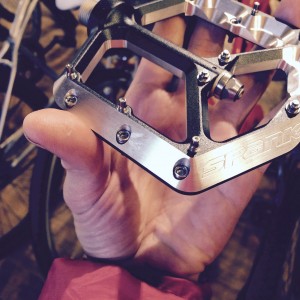
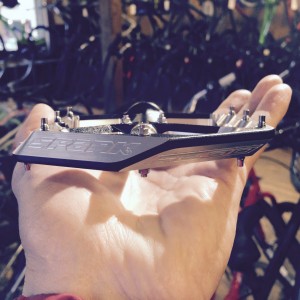
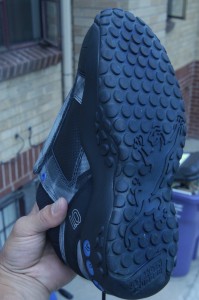
Stay away from cheap, low-quality flat pedals. A quality flat pedal will be thin with a large platform, have a parallelogram shape when viewed from the side (so it spins under your foot when stepped on), and have replaceable pins. These features combined with a shoe that has a flat, low profile, and soft soft rubber sole (5.10, Vans, etc…a decent skate board shoe will work) will provide more than adequate traction on the pedal.
What are the advantages of clip-less pedals?
Efficiency at the shoe/pedal interface is one. Shoes that are compatable with clip-less pedals will have a much stiffer sole relative to flat pedal shoes. The cleat on the bottom of these shoes will be made of metal and it will engage in a metal pedal. These are hard surfaces and there will be very little energy loss between shoe/pedal interface. On the contrary, flat pedal shoes are almost always pretty flexible and the soles are made of soft rubber to get a better purchase on the pedal. I can almost always feel a little “squish” of a flat pedal shoe with every pedal stroke, thus, there is a decent lose of energy.
Another advantage is the ability to “spin like a roadie”. As alluded to above, remaining seated on the smooth sections of trail and spinning a high cadence is arguably the most effective way to deal with these trail sections and provide the most efficiency and net speed over larger distances (but not very effective in a short distances, like a sprint…where the rider will almost always be out of the seat for maximum power). And, even on the most technically difficult rides out there—though you’ll need to get out of the seat on the nasty stuff—you’ll very often have a lot of ground to cover that is not technical at all and, thus, falls into this category.
***Note: there are people out there that will state that clipping in has no advantage what-so-ever over flat pedals, even in terms of pure pedaling. They’ll site various graphs and charts and numbers, etc. as proof. I’ll call BS on that. I’ll site road racing as an example: high cadence, seated pedaling, on smooth surfaces, while clipped in… That is what professional road racers do, for the most part. The type of pedaling that I’m referring to in this instance—on a smooth trail—is quite similar to road racing and not to what we would need to do in steep and varied terrain— rough trail. While there definitely are a lot of times when the perceived advantages of clip-less pedals are negated, I believe they do hold a pretty big advantage on smooth sections of trail where the rider can remain seated and utilize an efficient high pedal cadence. If someone tells you that there is no advantage to clipping in, ask them, ‘then why do roadies do it?’
So when and where would you ride flats over clip-less and vice versa?
I’ll use this example. Last summer I rode a super fun trail. It was a long, multi-hour climb out and to the top of a ridge. Then, all the way back to town, the trail descended on the very top of this rocky ridge. This was a few miles in duration, and it was steep, technical riding the whole way back. It was literally a rocky spine with a decent sized steep drop to either side.
I was riding clip-less pedals on that trip. There are a few different types of clip-less pedals, Shimano SPD’s being one of them. I love the feel of SPD’s over any other type of pedal, but one of their drawbacks is that once they get a little dirty—this could be mud, snow, or even a lot of dust, as was the case on this ride after a long day in extremely dry conditions—it can be a little tough getting in and out of the pedal. Not being able to get out of the pedal, when needed, on this trail was not an option. It would mean almost certain injury. It would have been very nice to have flat pedals, and, thus, to be able to abandon ship at will. If I ride that trail again, I’m throwing some flats on!
Anytime you feel a little intimidated by the terrain, flat pedals are a nice go-to just for the safety factor. But, you have to first put the time in to feel comfortable riding them. Once you get comfortable on flats, you’ll be able to go back with just a slight adaptation period.
I’ve had similar experiences in exactly opposite terrain: trails covered in wet slippery leaves and roots on the east coast. These trails were by no means intimidating. But, I knew that there would be a least a few times when I would find myself suddenly losing traction and needing to immediately get a foot down. Sometimes, when things happen real fast, even the split second it takes to release your shoe from the pedal is too much. I would’ve liked to have flat pedals for that ride.
Even at my advanced age, I still do a bit of dirt jumping. I always ride with flats when I dirt jump. The last thing I want, is to be attached to my bike when things go bad in the air.
On trails, I almost exclusively ride clip-less pedals over flats these days. Why? Especially since I’ve been touting flats and kinda dogging and discrediting clip-less in this article? First, keep in mind I raced years and years of professional downhill exclusively on flats (however, I have always clipped in on XC and trail riding). I feel pretty good about my body position and weight placement on the bike, much of which I learned because of the time I spent riding flat pedals. I do enjoy the benefits of clip-less pedals, namely their efficiency. I also feel real good about being able to get in and out of my clip-less pedals (most of the time). And, finally, when I do ride like a goon and make huge mistakes…instead of blowing off my pedals and crashing, my feet are right where I left them: on the pedals!!!
But, again, riding flat pedals played a huge role in my learning and understanding of proper riding technique. I am very comfortable with either set-up and can easily go back and forth depending on the riding conditions. I highly advise any MTB’er who wishes to become a good technical rider to spend a bunch of time on flats, enough to get comfortable riding them in any terrain. And, I especially encourage the beginners to lay off the clips for a while.
Of course, if you’re a serious XC racer, you’ll probably want to race clipped in, but spend some time on flats to help develop proper technique. There is a learning curve to flats. So, if you’ve never ridden them, don’t throw a pair on your bike right before the big race or a huge ride with your buddies…give yourself some time to figure them out in a very controlled setting.
That’s it for now. Check out www.dirtsmartmtb.com for more on MTB skills instruction and coaching, scheduled clinics, skills videos, articles, blog…

